What if the tongue is cut out?
Xavier Robles de Medina
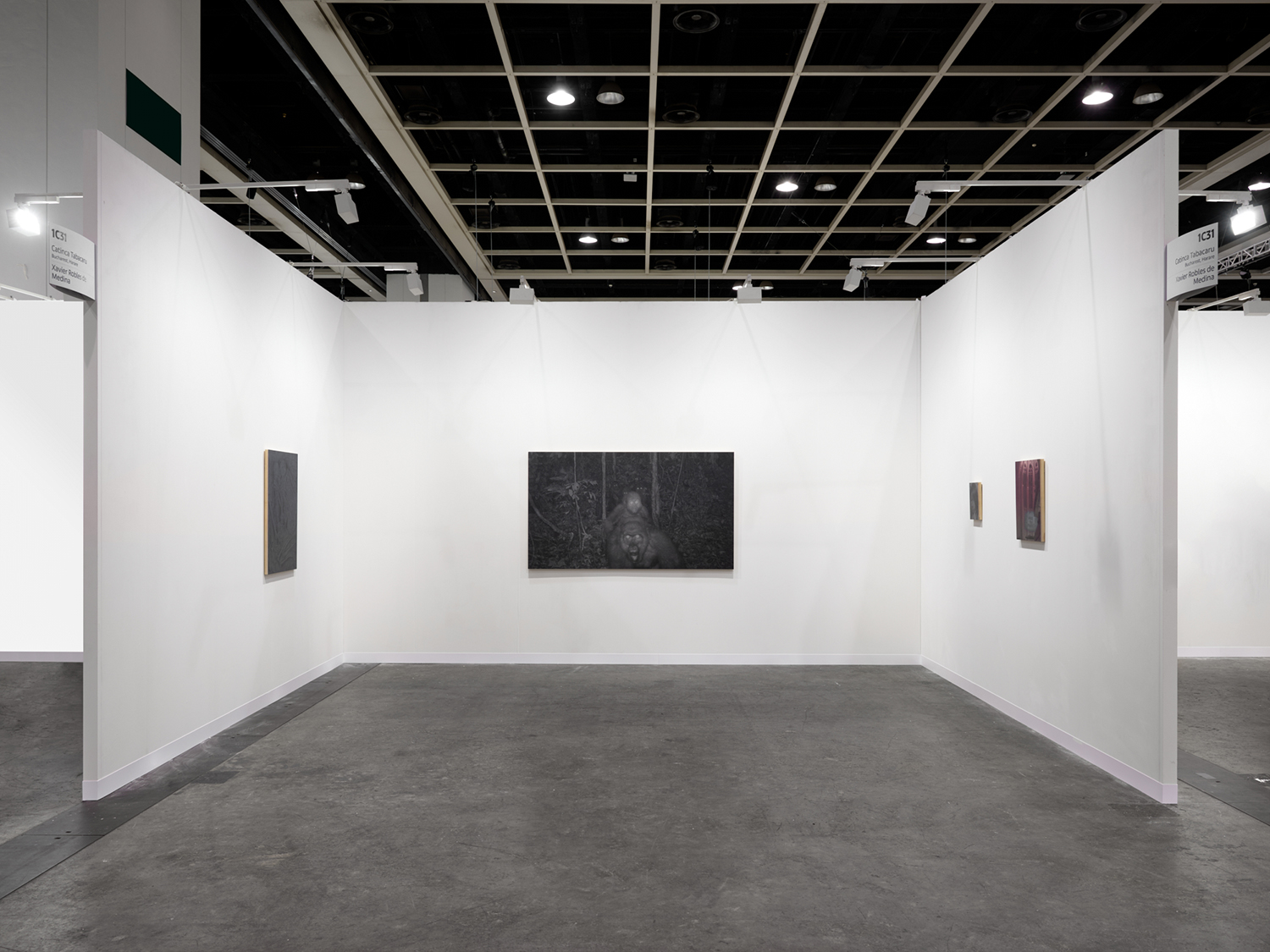
Xavier Robles de Medina’s presentation with Catinca
Tabacaru Gallery at Art Basel Hong Kong
Discoveries 1C31
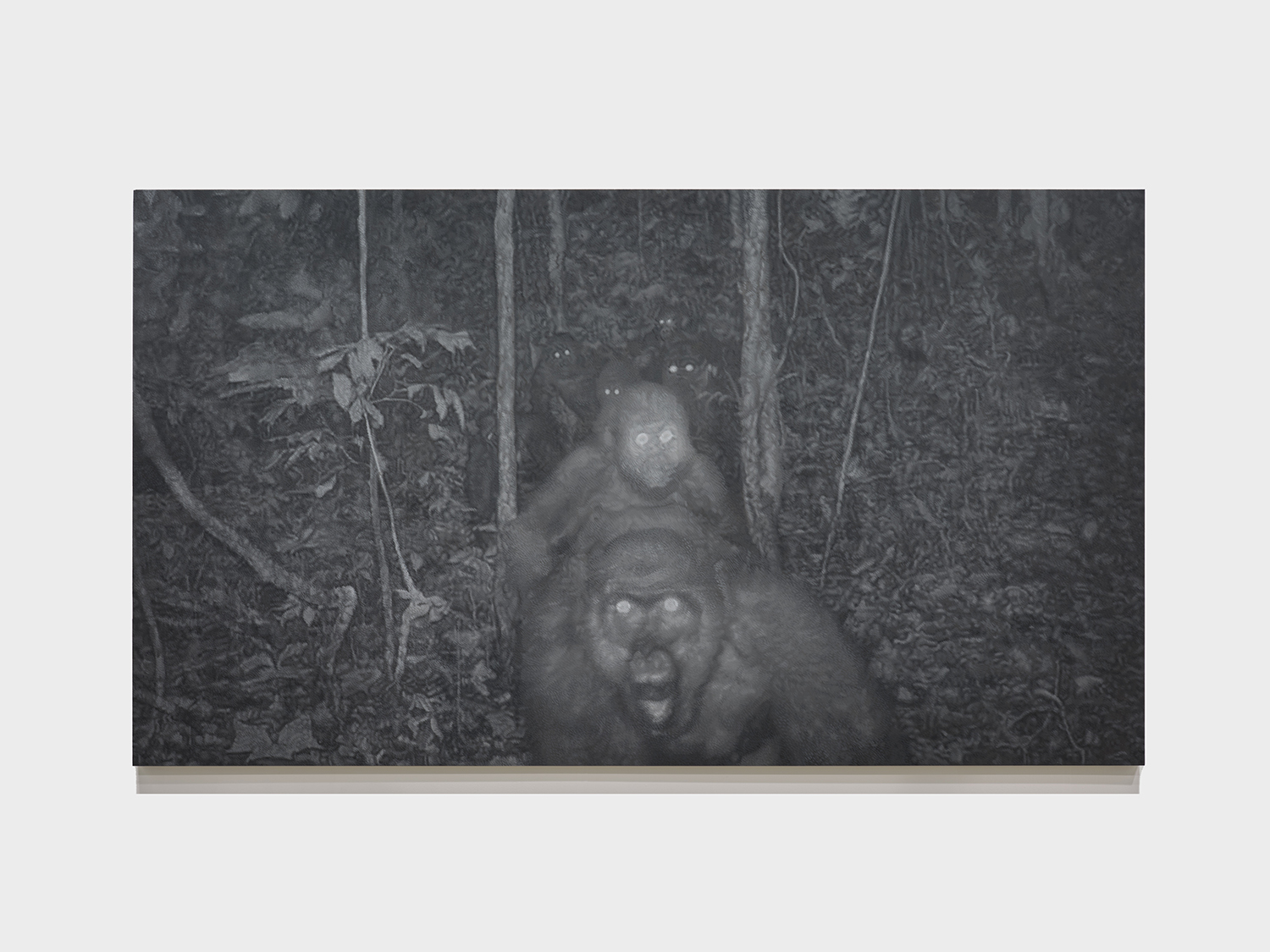
Xavier Robles de Medina
Gorillas in the Mountains of Southern Nigeria: World’s rarest great ape pictured with babies, BBC News, 9 July 2020, 2022
Acrylic on wood
114 × 200 cm
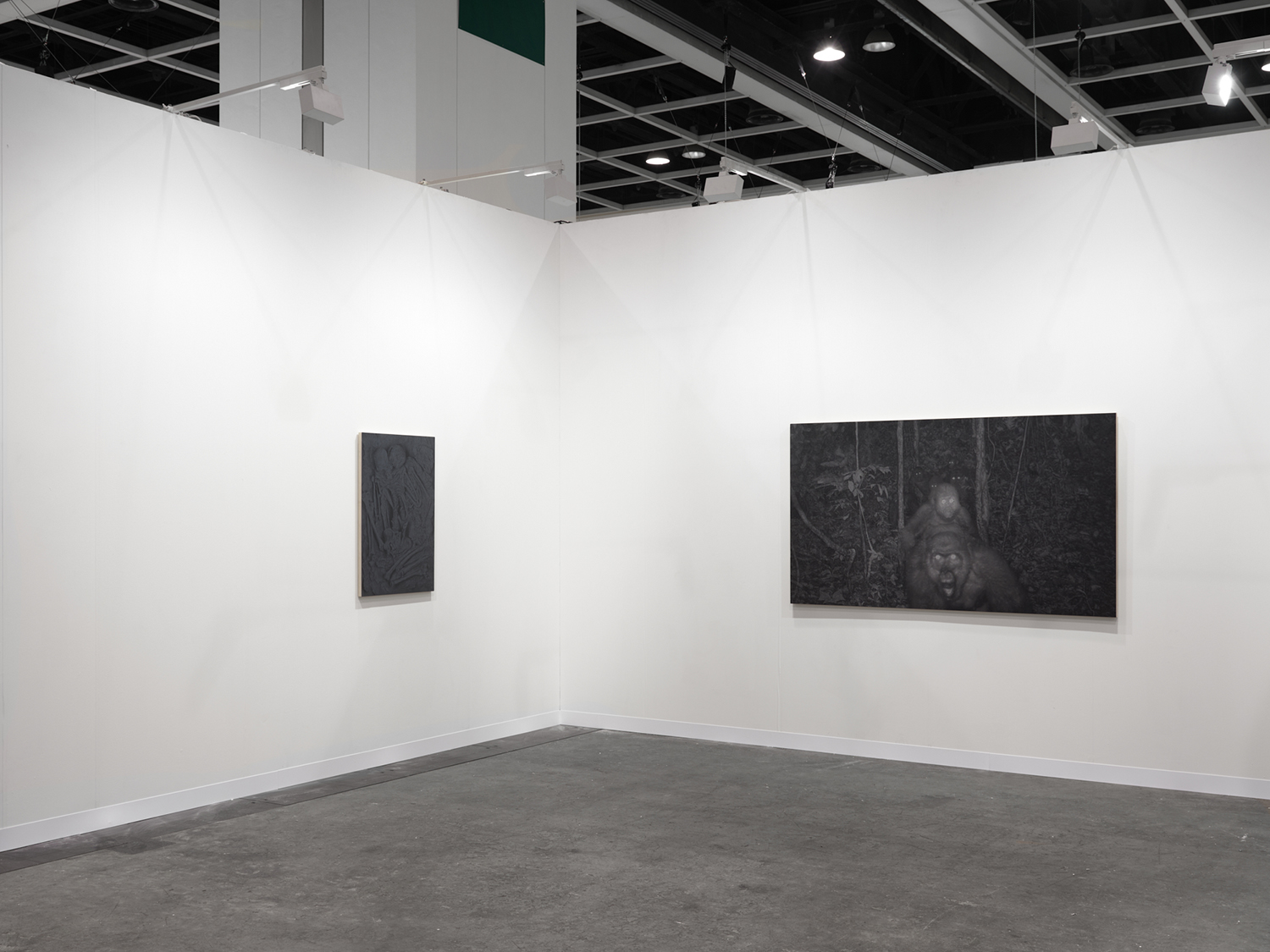
Xavier Robles de Medina’s presentation with Catinca
Tabacaru Gallery at Art Basel Hong Kong
Discoveries 1C31

Xavier Robles de Medina
The original position of the skeletons from the double burial from Grotte des Enfants. Upper Paleolithic, Italy. c. 24000 – 20000 BC, 2021
Acrylic on wood
96 × 67 cm
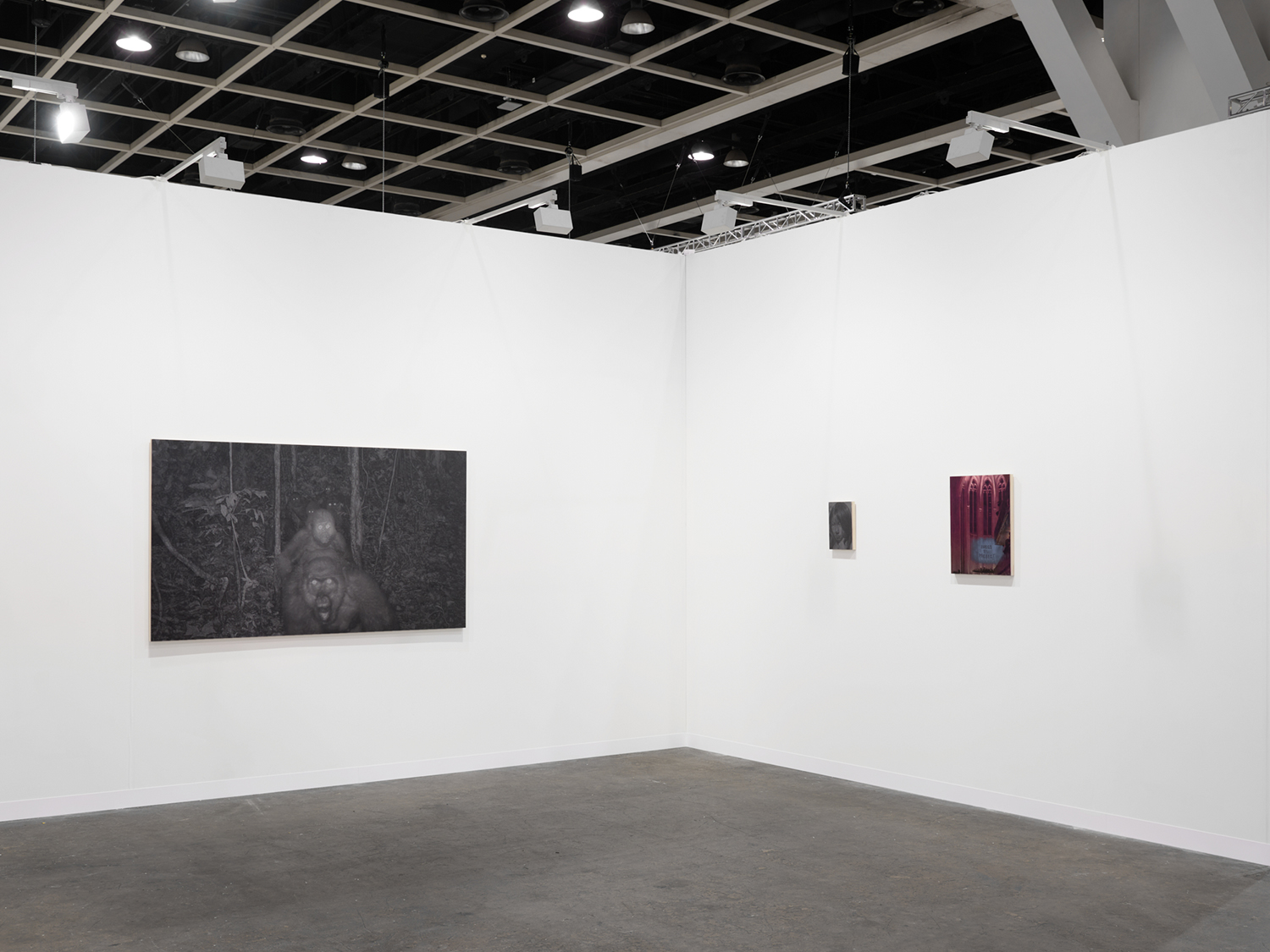
Xavier Robles de Medina’s presentation with Catinca
Tabacaru Gallery at Art Basel Hong Kong
Discoveries 1C31
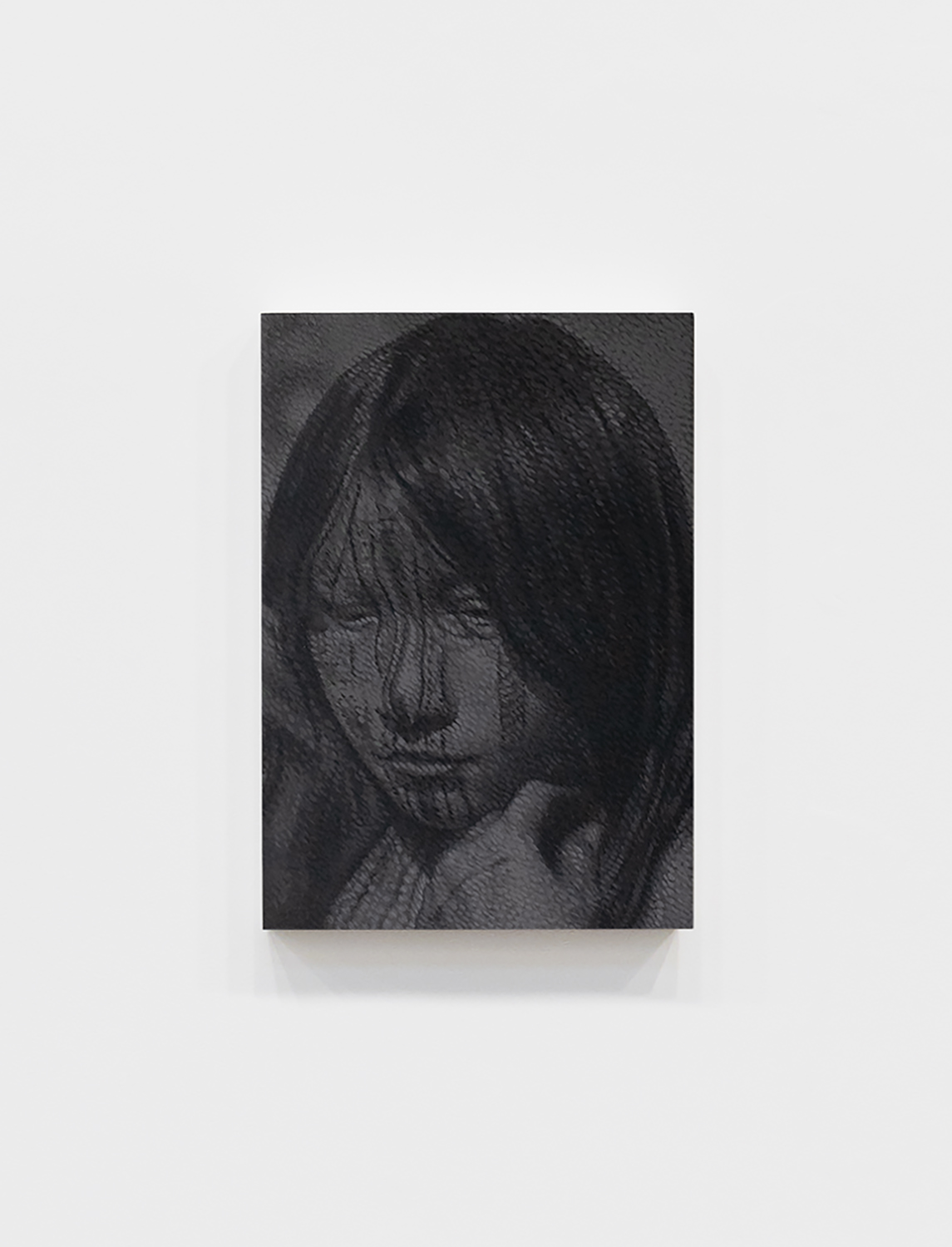
Xavier Robles de Medina
Wayana facial painting. French Guyana. 1953. (source: Dominique Darbois), 2022
Acrylic on wood
30 × 21 cm
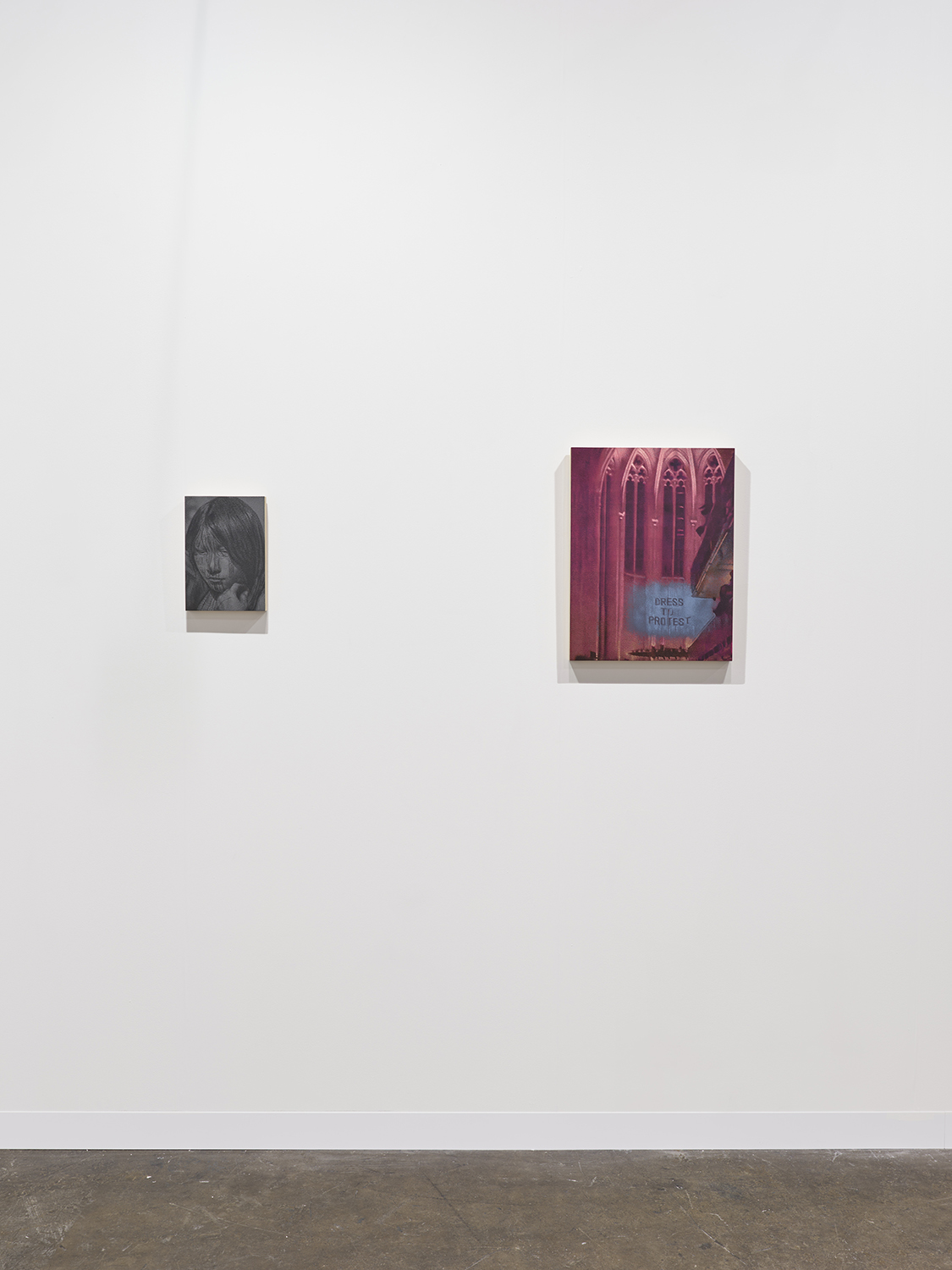
Installation View

Xavier Robles de Medina
Untitled (dress to protest), 2022
Acrylic on wood
56 × 43 cm
What if the tongue is cut out? Xavier Robles de Medina’s presentation with Catinca Tabacaru Gallery at Art Basel’s show in Hong Kong marks the artist’s first solo exhibition in East Asia.
On the occasion of Catinca Tabacaru Gallery’s first participation at Art Basel Hong Kong, we are elated to present a solo exhibition by Surinamese artist Xavier Robles de Medina. Known for his rigorous monochrome works, Robles de Medina combines a consistent, almost mechanical mark-making technique and surface quality, with pictures drawn from a personal archive. His paintings appear to exist on two extreme sides of a spectrum: the generic/emblematic and the highly personal. It is when these tendencies collide, that we seem to glimpse the unknown that Robles de Medina is attempting to “excavate” through his idiosyncratic mix of symbols. The poetry and non-linearity of his subjects belies the almost mathematical rhetoric of how he constructs his paintings, which are always mediated through the Cartesian coordinate system.
In true Robles de Medina fashion, What if the tongue is cut out? presents four scenes that differ in geographic location, period, size and colour. The acrylic on wood works show a group of rare gorillas photographed in the Nigerian jungle; a portrait of a girl from the Wayana tribe local to the artist’s home of Suriname; an image found on social media taken at a Dutch rave inside a Gothic cathedral; and two combined views of an Upper Paleolithic double burial excavated from a cavein Italy.
Measuring at two meters in width, Gorillas in the Mountains of Southern Nigeria: World’s rarest great ape pictured with babies, BBC News, 9 July 2020 is a life-size painting of nearly extinct gorillas glimpsed by hidden camera traps. The artist sourced the image from a 2020 BBC news article, which speculates that this threatened species has begun reproducing at the same time that humans around the world are retreating to suppress the spread of COVID-19.
Wayana facial painting. French Guyana. 1953. (source: Dominique Darbois) _depicts a young girl engaging with the ethnographer behind the lens of Robles de Medina’s photographic source. The painting, cropped from its original format, shows her evading the viewer’s gaze. As the magic of replication acquires the emotions of the characters portrayed, these paintings look back at the voyeur as they are contemplated. They take on a dominant role by confronting their observers, enacting a presence that attains agency. Along with _Untitled (dress to protest), which speaks to appropriations of protest culture in commercial advertising, these paintings dispel notions of objectification.
The theme of “photographic intrusion” extends throughout What if the tongue is cut out?. The original position of the skeletons from the double burial from Grotte des Enfants. Upper Paleolithic, Italy. c. 24000–20000 BC shows a double burial uncovered and recorded by the camera lens. Double burials were surprisingly frequent within this excavation site, at about one in five. A 2015 article hints at the widely accepted notion that Upper Paleolithic societies engaged in practices of human sacrifice: “Frequency, composition by age and sex, and simultaneity of
interment suggest that death by natural cause may not be the most likely explanation for these findings.”
As the artist recontextualizes these findings in his painting, he removes the scene from the archeological sphere. The final work offers space for nonlinear and metaphorical readings, rather than relying on a set of scientific tools.
“But what if the mother tongue is stunted? What if that tongue is not only the symbol of a void, but is itself a void, What if the tongue is cut out?”
The exhibition’s title is extracted from Ocean Vuong’s 2019 novel On Earth We’re Briefly Gorgeous. In this quote, Vuong alludes to a trauma encrypted within the Vietnamese that the protagonist was taught by his mother. The void is not simply a metaphor for silence, but something deeper, like a wound. Within the context of Suriname, the only Dutch speaking country in South America, around ten other languages are spoken. Furthermore, the artist who is educated in the UK and the USA, now lives in Germany. In choosing this title, we undoubtedly glimpse Robles de Medina’s own complex relationship to language.
Perhaps he connects Vuong’s words to the language of images as well. There is always a bifurcation in the artist’s work between the literal and the metaphor, the discursive and the figural, between what is said and how it is interpreted, or translated, or appropriated, between the speaker and the listener. Stepping back slightly, Robles de Medina’s emphasis on tangibility suggests a deep yearning to connect with the viewer. After all, if the tongue is not only the symbol of a void, but is itself a void, then perhaps it’s also an invitation to enter.
Xavier Robles de Medina in Art Daily
“Being part of Art Basel Hong Kong is an absolute thrill for a young gallery participating for the first time. I can feel the ground under me moving as we engage with a new network of collectors and curators who are loyal to the fair. While it’s not the same as being in Hong Kong physically, we have been enjoying meeting everyone over zoom. We have a permanent screen in the booth and are meeting most visitors who are interested in speaking with both the gallery and the artist.” – Catinca Tabcaru for Art Daily
1.6.2022